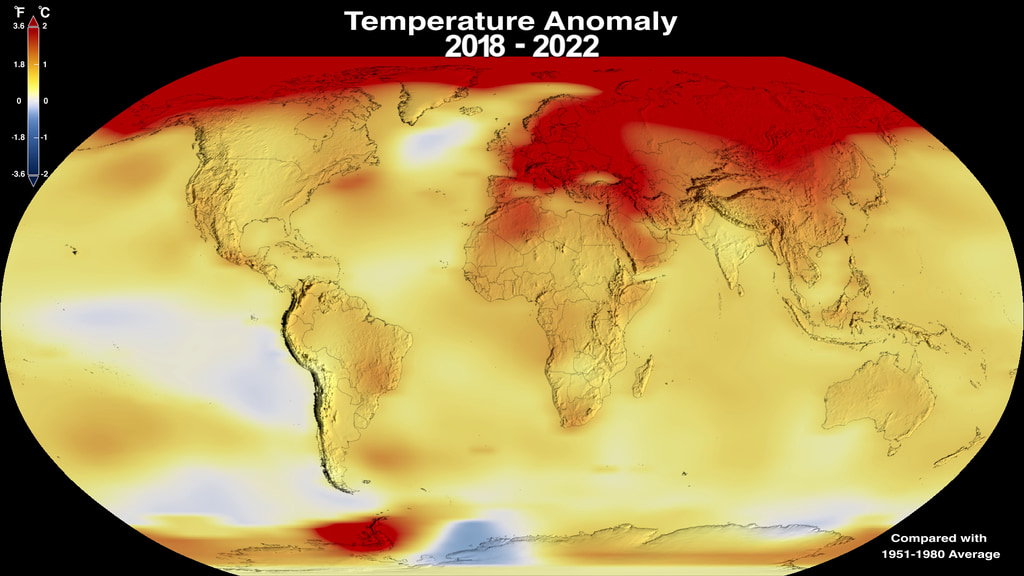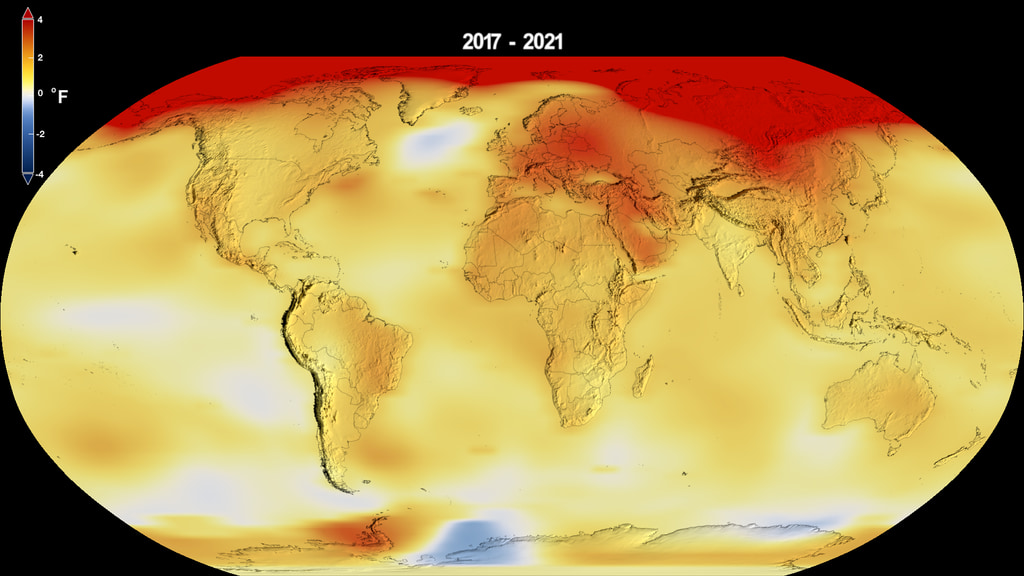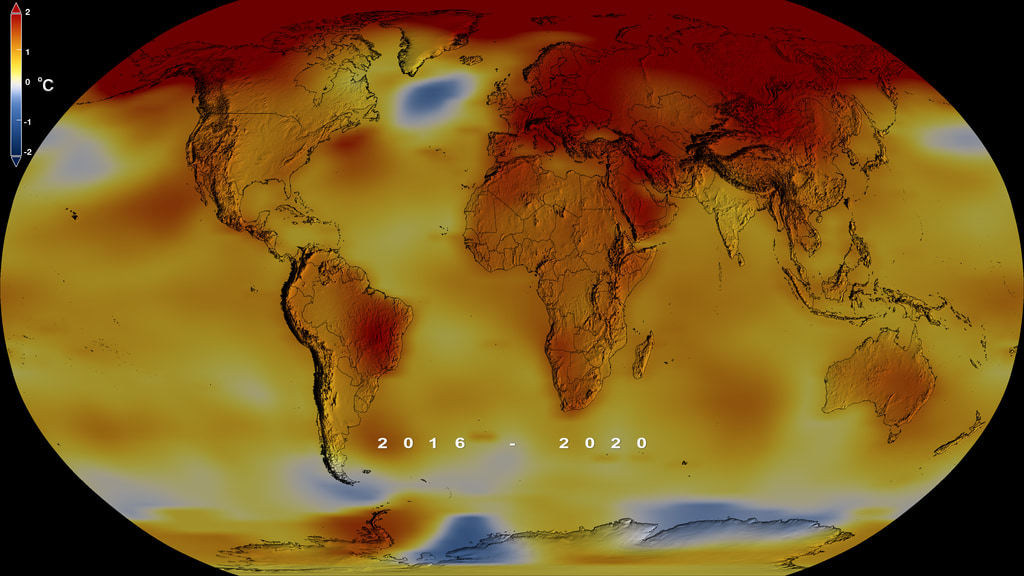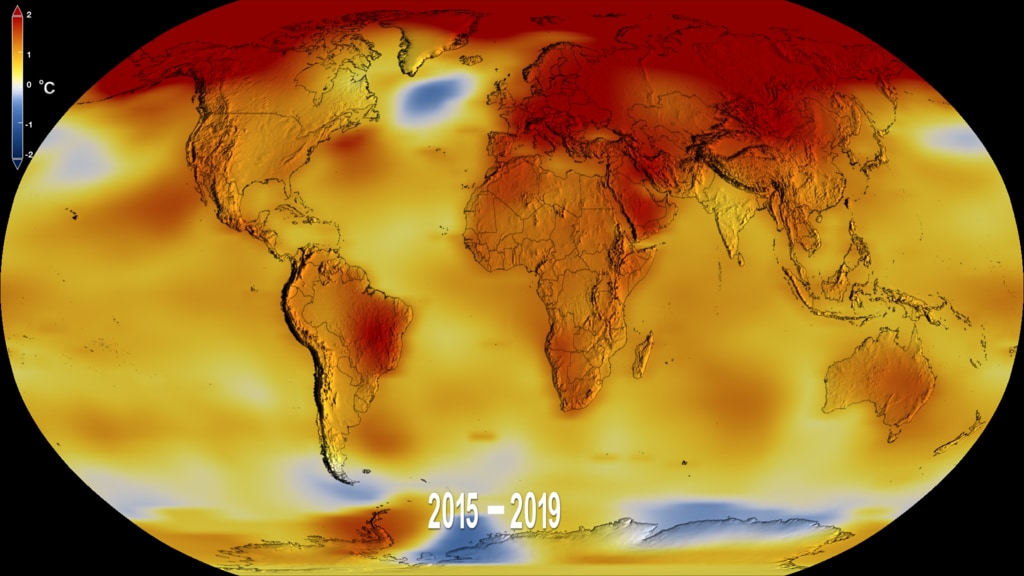2019 Was the Second Hottest Year on Record
Earth's global surface temperatures in 2019 ranked second warmest since 1880, according to independent analyses by NASA and the National Oceanic and Atmospheric Administration (NOAA).
Global temperatures in 2019 were 2 degrees Fahrenheit (1.1 degrees Celsius) warmer than the late 19th Century, according to scientists at NASA’s Goddard Institute for Space Studies (GISS) in New York. 2019's temperatures were second only to those of 2016 and continued the planet's long-term warming trend: the six warmest years on the instrumental record have been the six last years.

Earth’s long-term warming trend can be seen in this visualization of NASA’s global temperature record, which shows how the planet’s temperatures are changing over time, compared to a baseline average from 1951 to 1980. The record is shown as a running five-year average.

Zoom into the U.S.
Audio from telecon with Gavin Schmidt and Deke Arndt
Credits
Please give credit for this item to:
NASA's Goddard Space Flight Center
-
Producer
- Kathryn Mersmann (USRA)
-
Writer
- Maria-Jose Vinas Garcia (Telophase)
-
Visualizer
- Lori Perkins (NASA/GSFC)
-
Scientist
- Gavin A. Schmidt (NASA/GSFC GISS)
-
Technical support
- Aaron E. Lepsch (ADNET Systems, Inc.)
Release date
This page was originally published on Wednesday, January 15, 2020.
This page was last updated on Wednesday, May 3, 2023 at 1:45 PM EDT.
![Music: Organic Machine by Bernhard Hering [GEMA] and Matthias Kruger [GEMA]Complete transcript available.](/vis/a010000/a013700/a013799/2020Temp.png)
![Music: Sculpture by Axel Coon [GEMA], Ralf Goebel [GEMA]Complete transcript available.](/vis/a010000/a013100/a013142/FlatMapStill.jpg)



